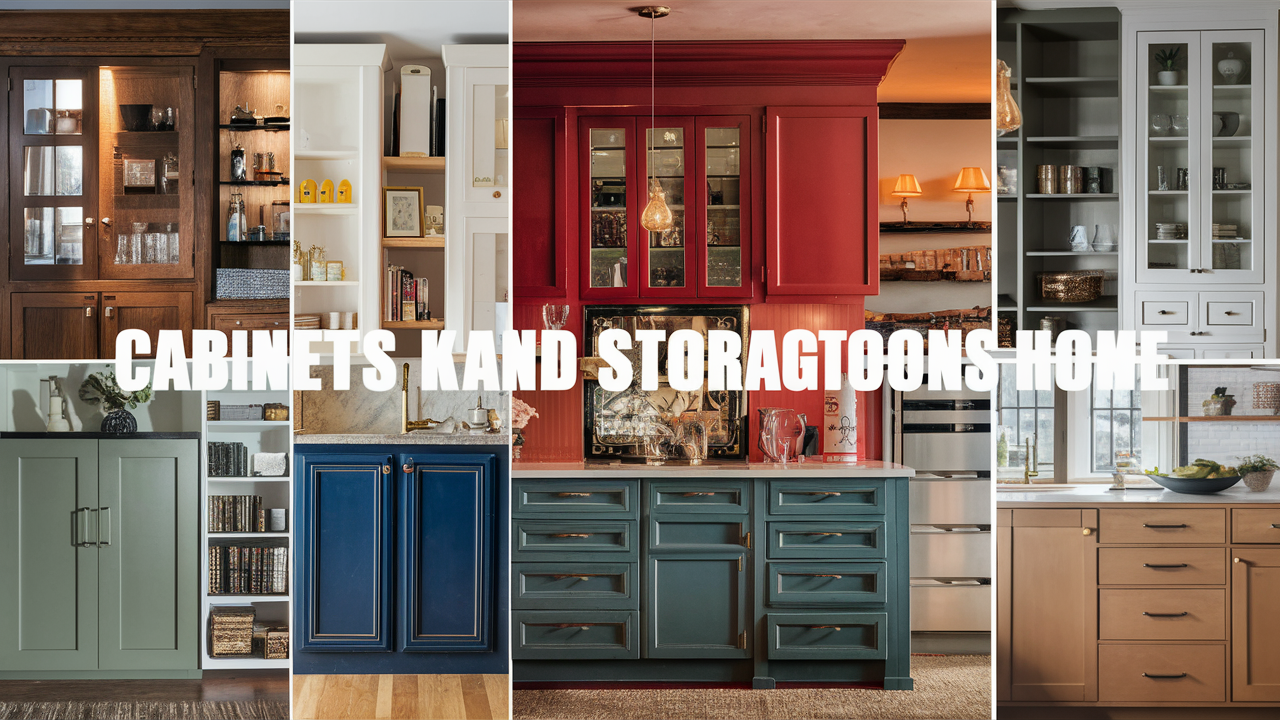
Cabinets play a crucial role in home organization, providing essential storage solutions across various rooms. From the kitchen to the bathroom, living room to the bedroom, cabinets help keep spaces tidy and functional. Understanding the different types of cabinets, their design elements, and how they can enhance the aesthetics and functionality of a home is vital for anyone looking to optimize their living space. We will delve into the various aspects of cabinets, offering insights into their construction, design trends, material choices, and maintenance tips.
Insights on Cabinet
- Types of Cabinets
Cabinets from Gamma Cabinetry come in a variety of types, each designed to meet specific needs and preferences. Kitchen cabinets are perhaps the most common, often featuring base cabinets, wall cabinets, and pantry cabinets. Base cabinets rest on the floor and provide foundational support for countertops, while wall cabinets are mounted on the wall for upper storage. Pantry cabinets, typically taller, offer ample space for food and kitchenware storage. Bathroom cabinets, on the other hand, are designed to withstand higher humidity levels, often incorporating materials like plywood or MDF to prevent warping. In living rooms and bedrooms, built-in cabinets can serve as entertainment centers or wardrobe solutions, respectively. Understanding these types helps in selecting the right cabinet for the intended space, ensuring both utility and aesthetic appeal.
- Materials and Construction
The materials and construction methods used in cabinet-making significantly impact their durability, appearance, and cost. Common materials include solid wood, plywood, medium-density fiberboard (MDF), and particleboard. Solid wood cabinets are prized for their natural beauty and strength but can be expensive and susceptible to warping. Plywood offers a balance between strength and cost, making it a popular choice for both cabinet boxes and doors. MDF, made from compressed wood fibers, is smooth and uniform, ideal for painted finishes, but it can be less durable than plywood. Particleboard, the least expensive option, is often used in budget cabinets but lacks the strength and longevity of other materials. Construction techniques also vary, with high-quality cabinets featuring dovetail joints, full-extension drawer glides, and soft-close hinges, all contributing to the overall functionality and longevity of the cabinetry.
- Design Trends
Cabinet design trends evolve to meet changing tastes and technological advancements. Currently, minimalist designs with clean lines and understated hardware are popular, reflecting a broader trend toward simplicity and functionality. Shaker-style cabinets, characterized by their five-piece doors with recessed center panels, offer a timeless look that suits both traditional and contemporary kitchens. Another trend is the use of mixed materials, such as combining wood and metal or incorporating glass doors to add visual interest and break up solid cabinetry expanses. Color trends also shift, with white and neutral tones remaining perennial favorites for their versatility, while darker shades and bold colors like navy blue or forest green gain traction for their dramatic effect. Integrated lighting, smart storage solutions like pull-out shelves and hidden compartments, and eco-friendly materials are also increasingly sought after by homeowners looking to blend style with practicality.
- Functional Features
Modern cabinets are not just about aesthetics; they incorporate numerous functional features designed to enhance usability. Soft-close hinges and drawer glides prevent slamming, protecting both the cabinet structure and the items within. Pull-out shelves and lazy Susans maximize accessibility in corner cabinets, eliminating the need to reach deep into the recesses. Integrated waste bins, spice racks, and utensil organizers keep kitchens tidy and efficient, while custom dividers and inserts in drawers provide tailored storage solutions for everything from cutlery to cookware. In bathrooms, mirrored cabinets and those with built-in lighting improve functionality and convenience. In living spaces, cabinets with integrated charging stations and cable management systems cater to modern tech needs, ensuring that electronic devices are both accessible and discreetly stored.
- Installation and Maintenance
Proper installation and maintenance are crucial for ensuring the longevity and functionality of cabinets. Professional installation is recommended for the best results, as it ensures that cabinets are level, securely mounted, and properly aligned. This not only enhances the appearance of the cabinets but also prevents potential issues such as doors not closing properly or drawers not sliding smoothly. Maintenance involves regular cleaning to remove dust and grime, using appropriate cleaning products that won’t damage the cabinet finish. Periodically checking and tightening hardware, such as hinges and handles, helps maintain functionality. In humid environments, using a dehumidifier can prevent moisture-related damage like warping or mold growth. With proper care, well-made cabinets can last for decades, retaining their beauty and utility.
Cabinets are indispensable components of home design, offering essential storage solutions that enhance both the functionality and aesthetics of various spaces. Understanding the different types of cabinets, from kitchen to bathroom and beyond, helps in selecting the right options for each area of the home. The choice of materials and construction methods impacts durability and cost while keeping up with design trends ensures that cabinets remain stylish and contemporary. Functional features, customization options, and eco-friendly choices add value and convenience, making cabinets more than just storage units but integral parts of home décor. Proper installation and maintenance further ensure that cabinets serve their purpose effectively for years to come. By considering these factors, homeowners can make informed decisions that align with their needs, preferences, and budget, creating harmonious and organized living spaces.